Case Study: Custom Solution with Two 10 Axis Robots, Flexible Tack and Weld Fixtures
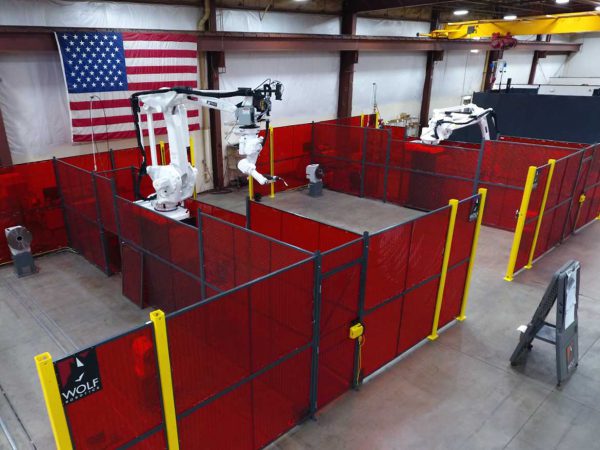
The Challenge
Our customer, a leader in heavy equipment, contacted us to build a custom robotic system to weld sub-assemblies. The system was required to be flexible and accommodate over 400 versions of the customer’s part models, ranging from 6-10 ft. in length. The main goal of this project was to develop a tooling system that could easily adapt to the wide variance in part size while improving weld quality, component fit-up, and the dimensional accuracy of their weldments. By reducing part flaws and increasing throughput, our customer is able to reduce their costs through automation.
The Solution
After several meetings with the customer to completely understand their challenges and goals, Wolf Robotics provided them with a turn-key solution, which included:
Custom Fixtures:
We designed and built two tack tools with the ability to adjust to any of the 400 part models. The changeover process is quick and toolless, using linear rails with pinned locations and quick change locating and clamping features. The tack tools hold and locate the individual sub-assemblies, while the operator tacks them in place. While the tack tools are located outside the robot system, there are 4 hold only fixtures installed on the headstock/tailstock positioners. The tacked weldments are then transferred into the hold only fixtures for final robotic weld out.
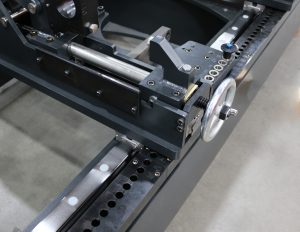
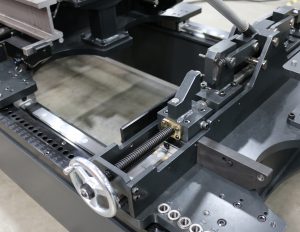
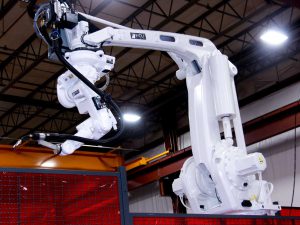
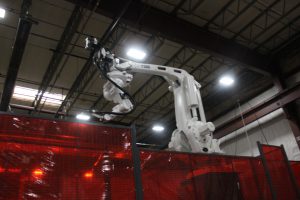
ABB® IRB 800 Robots
By placing a small 6-axis welding robot in series with a large 4 axis palletizing robot, we were able expand the work envelope of the welding robot to reach the full range of parts. This approach has proven to be an economical alternative to long robot travel tracks and other complicated gantry systems.
Headstock/Tailstock Servo Positioner
The fixtures were mounted to headstock/tailstock positioners to optimize reach and weld position. Wolf Robotics also deployed automatic motor optimization software to maximize motor acceleration and deceleration depending on fixture part weight.
Safety Features
Safety and floor space is optimized by utilizing floor area scanners in conjunction with traditional light curtains and fixed barriers. The system is capable of identifying operators within the working range of the robot, but doesn’t require a two stage safety reset sequence. The robot will not be allowed to work in automatic mode until every person has cleared the cell.
Process Testing & Install
All equipment and part runoff was setup in the Wolf Robotics facility for production trial runs and testing before installation.
Impact to the Customer
The final weld system provided the customer with the following benefits:
- Flexibility and expandability to meet the production needs of many different current production and future design part families
- Labor reduction with increased throughput
- Increased safety with less material handling
